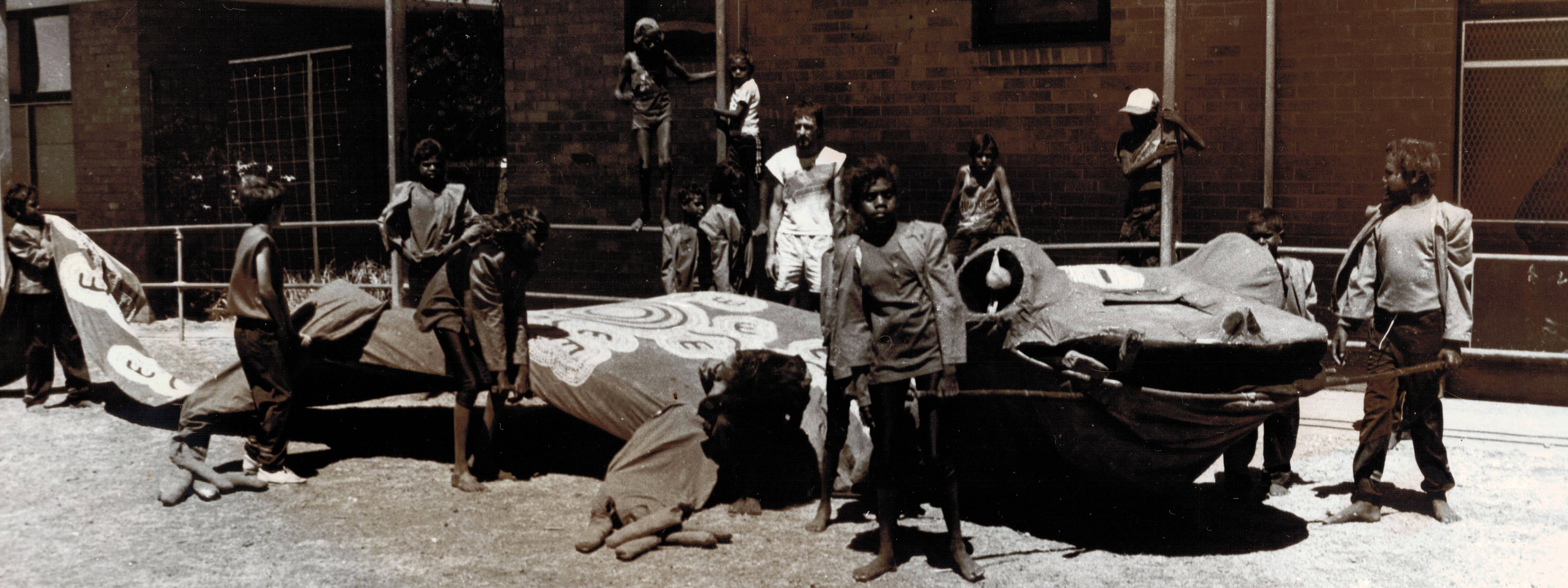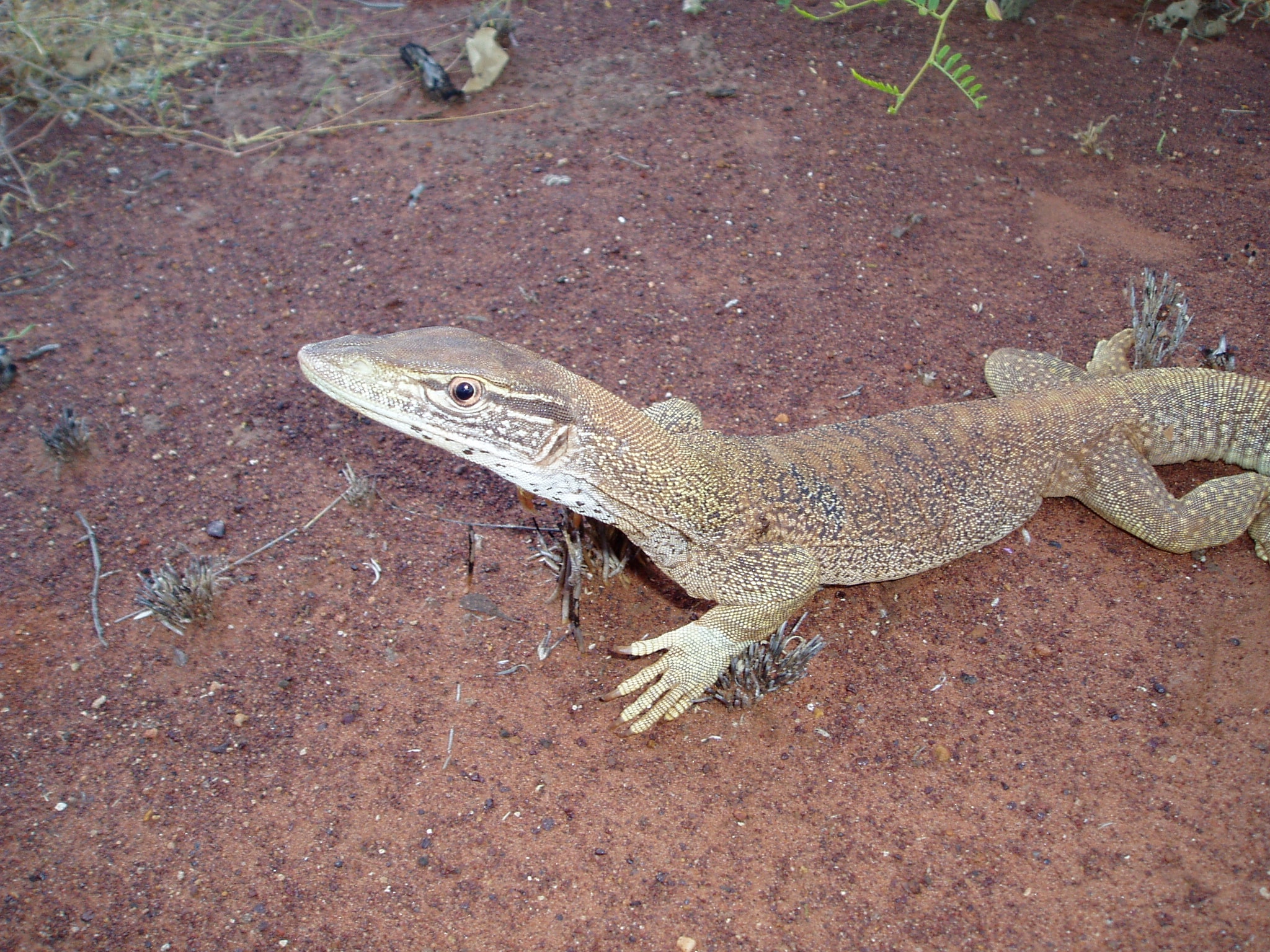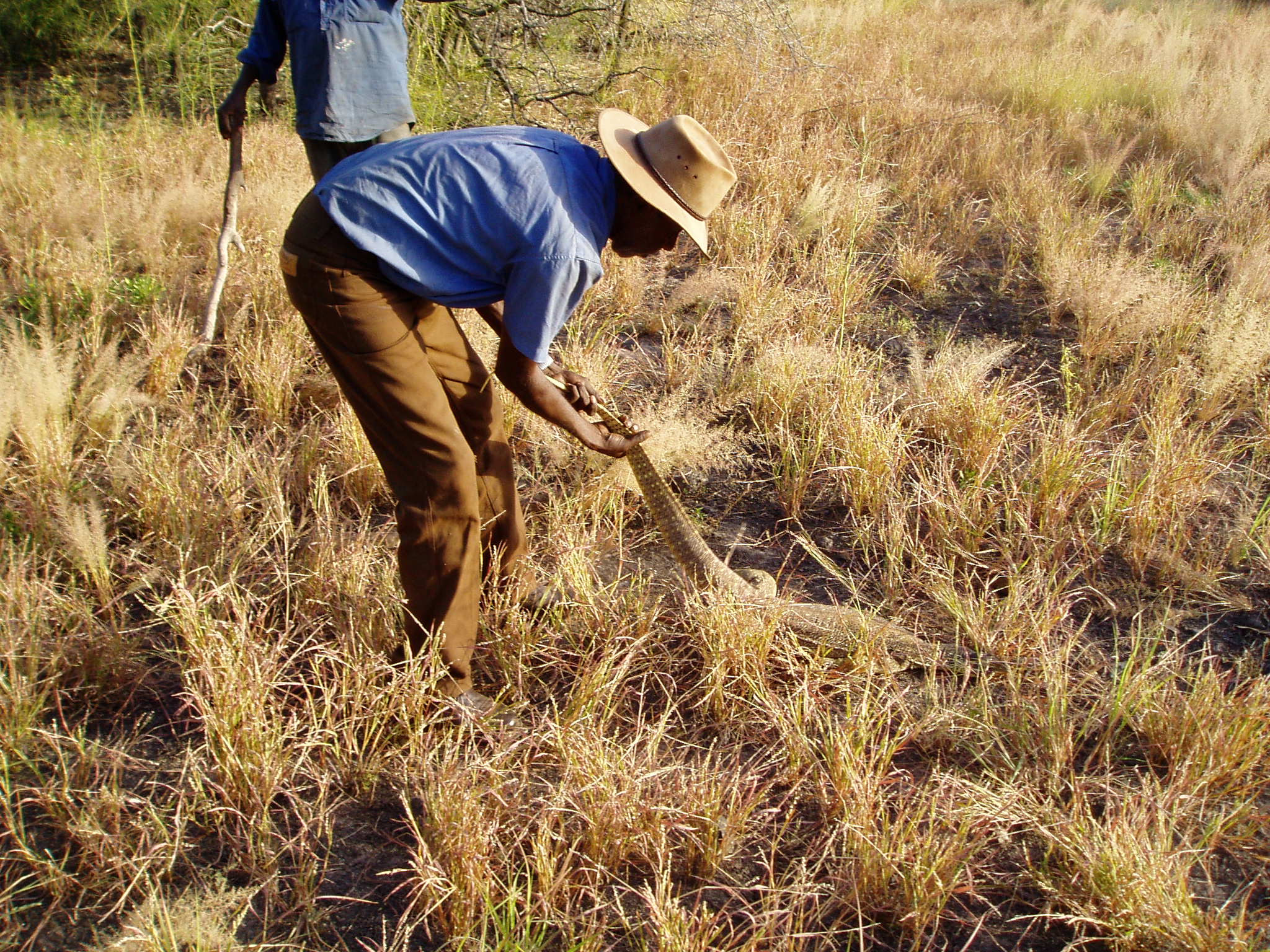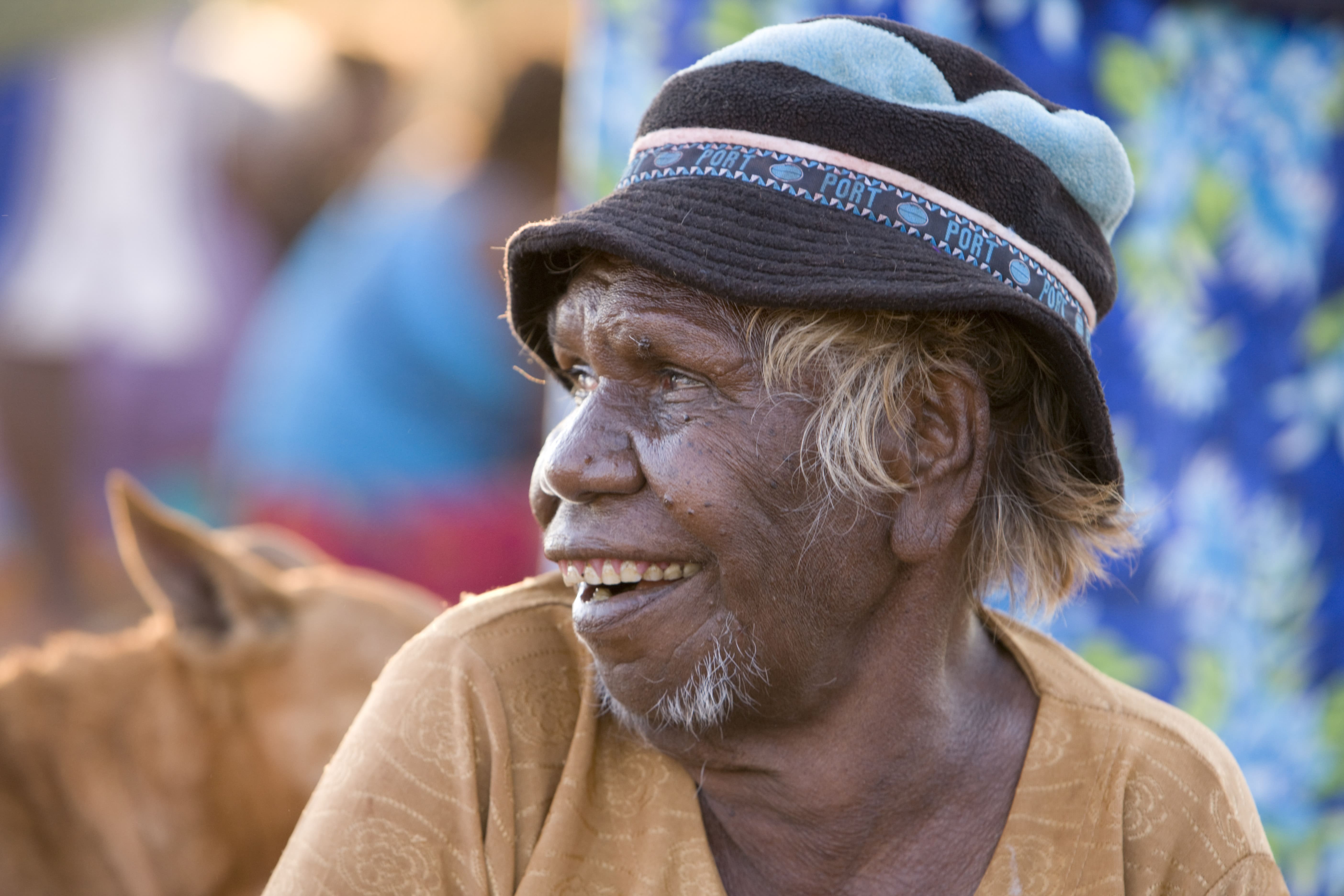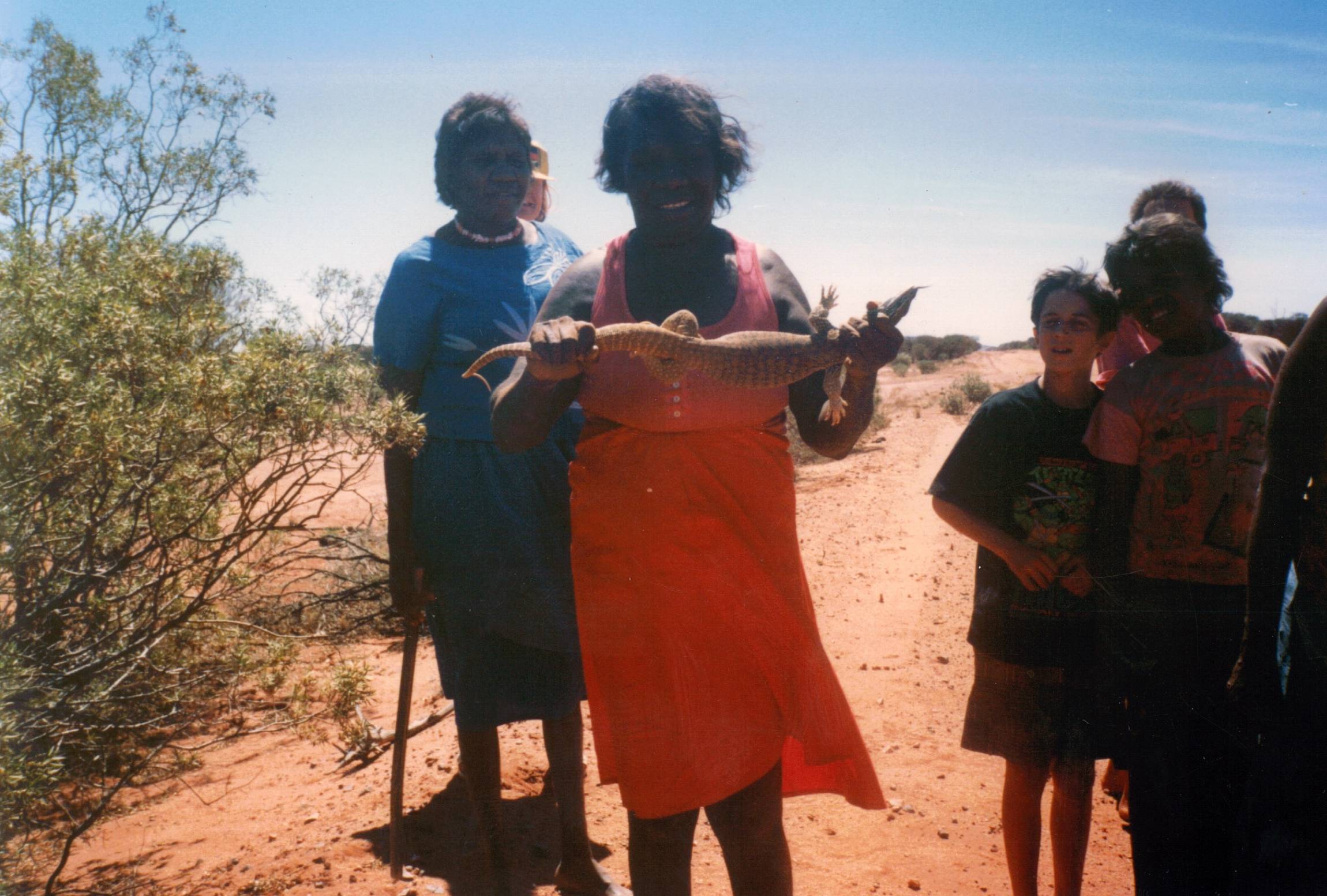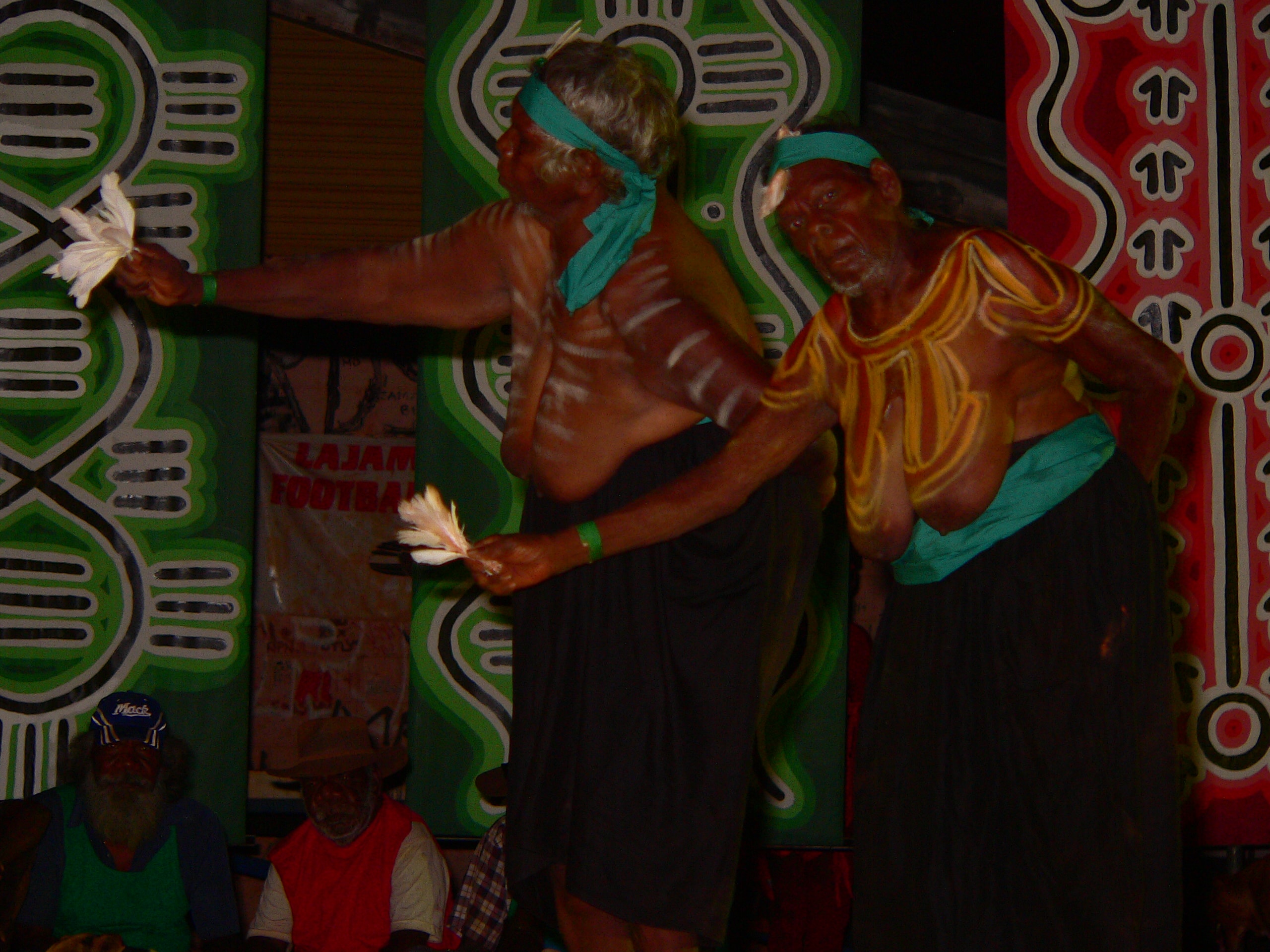Milpirri Banner - WARDAPI (Goanna)
Dreaming
Wardapi (Gould's monitor, sand monitor, goanna). In the banner design, the circle is the hole where it lives, or goes to sleep. The two curved lines represent the piles of earth thrown up when the goanna is digging its hole. The “e” shaped symbols are the tracks of the goanna and the lines are its path. Traditional owner Lynette Tasman explains that part of the story talks about how the goanna was a lover boy and went to an area in the Newhaven wildlife reserve and got a Nungarrayi wife who was the wrong skin for him. This goanna is the one from the Mt Theo region and Yumurrpa.
Latin
Varanus gouldii
Biology
Sand Goanna - Photo / Information
Belonging to Skin Groups
Japangardi, Japanangka, Napangardi and Napanangka (Green Group)
Drawn By
Gladys Napangardi Tasman (dec), 2005
Family
Some of the custodians of the goanna story in Lajamanu are the Williams and Tasman families. (This information is to assist young people exploring their cultural stories. There are other Traditional Owners; for detailed advice about ownership of country contact the Central Land Council.)
Gladys Napangardi Tasman (dec) was a Traditional Owner of the Wardapi ceremony. She was renowned, along with her sister Maisie Kajanarra Napangardi Granites, for their fantastic dancing of the goanna ceremony.
Kurdungurlu
Jerry Jangala Patrick.
Moral
Steve Wanta Jampijinpa Patrick interprets the moral of the Wardapi (Goanna) dreaming. The story of the Wardapi offers us a warning. There is a saying in this story to always walk in your older brother’s footsteps. Stay on your path and don’t be distracted by the Wardapi hole. A Goanna hole might look like it contains good tucker but it could be dangerous, you could be bitten by a snake.
Warlpiri Children’s Books
Read Jeannie Egan Nungarrayi’s children’s book from 1984 called Wardapikirli. It was published in Yuendumu, N.T. by the Warlpiri Literature Production Centre. The English translation is at that end - Download PDF
Language Stories
Wardapi, wita karnalu ngarrirni. Wardapiji - yirdiji. Nyampurrajuku ka nyinami. Kuyu karnalu pakarni. Ngarni karnalu. Kalawurrupiyayijala, wardapiji nyanunguju, kala witalku ka nyina. Ngulya ka pangirni - ngulyanga ka nyina. Lajanga. Nyaninyangurlaji ngulyangkaji. Nyanungu wardapi - wita kuyu, ngulakarnalu purrami, kuna karnalurla mani ngakulykangurlu. Purra karnalu kunawangulku - ngarni karnalu. Jiraparnta. Ngirntirlangu karnalu ngarni, ngurrju. Witajala. Ngulyakurra karnalu pakarni lajakurranya. Kujanya karnanyarra yirripara witawitaji kuyuju. Nganimpanyangu. Ngulaka nyampurrajuku nyanunguju nyina wardapi. Pakarni karnalu nyampurrarlajuku, wirlinyi kujakarnalu yani - ngulakarnalu wirli-nyanyi - pakarnilki karnalu nyanunguju kuyu. Nyanyi karnalu. Wita. Yumurruwangu.
Wardapi is what we call that small animal. Wardapi is its name. They are found around here. We kill them for meat. We eat them. The goanna (wardapi) is like the yellow goanna (kalawurru) but it is smaller. It digs a burrow - and lives in its burrow. In its hole in the ground. In its own burrow. The goanna, that small animal, we cook it and we gut it through the underarm. We cook it without its entrails and we eat it. It is fatty. We eat its tail too which is good. It is a small animal. We find it in its burrow, in its hole in the earth and we kill it. I am describing to you the goanna which is a smallish animal. It belongs to us. Goannas are found around here. We hunt them around here. When we go hunting we see their tracks and we follow them and kill them. We find them. They are small and furless.
Yumpardi-jangka karli yani wirlinyilki wardapi-kirra kuyu-kurra. Kurupa karlirla jangkardu kanyi kuyuku pinjaku. Ngaka kapirli kanjarla purramilki wirlinyi-jangkarluju. Kapurlu ngarnilki yurnmilki. Yinyi karlipa-nyanu yajarri ngarninjakulku. Yungkurnulku karlipa pakarni ngarninjarla - ngirnti, jurni, kakarda. Ngula-jangka kapirlipa pakarninjarla ngarni. Jara karlipa ngarni.
After sitting at home you and I are now going hunting for goannas. We are carrying crowbars to kill the game with. Then we will carry them back and cook them after being out hunting. We will eat them when they are cooked. We give them to each other to eat. After eating (the flesh) we then crush the bones - the tail, belly and back of the neck. Then when we have crushed them we eat them. We eat the fat.
Dictionary Source: Laughren, M., K. L. Hale, and Warlpiri Lexicology Group, 2005 Warlpiri-English Encyclopaedic Dictionary. (Accessed Via Kirrkirr Interface to Electronic Files.) University of Queensland.
Interesting Facts
This dreaming is in the vicinity of the Mt Theo outstation which ran a highly successful youth diversionary project to stop petrol sniffing at Yuendumu.
Read about the youth diversionary project to stop petrol sniffing at Yuendumuin the book “dog ear café" - Story
Milpirri Dance
In the Milpirri performances, Wardapi (Goanna) has been danced by Men, Women and Youth.
The women are hunting for goanna, digging them out from their holes and killing them to eat - Video
The Men's dance is supported by the women. The Men are hunting for Wardapi (Goanna) and digging them up - Video
The dances performed by the youth explore themes drawn from the same ceremonial concepts as seen in the adult dances - Video
Big Goanna
In 1990 Brown's Mart Community Arts Darwin took up a three month residency in Lajamanu school to create a touring performance with students to travel to other Warlpiri communities. The key artists were Sarah Calver, Tim Newth, and Robyn Laurie. As part of the show Tim Newth made a giant goanna that has a trampoline built into its head, a crash mat in its belly, and the Wardapi design by Gladys Napangardi Tasman painted on its back.
Read about the 1990 residency in Lajamanu School - Story
